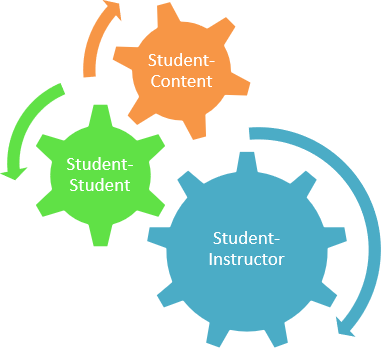
Faculty-student interaction is a hallmark of PLNU and the same can be true in the online environment. Interaction includes the tone of your emails and the attention you give to responding and connecting with students.
To distinguish online classes from correspondence courses, the US Department of Education requires that instructors provide “regular, substantive, and instructor-led interactions”. To follow these guidelines, consider employing some of the following strategies to encourage effective student-instructor interaction:
- Be present, personal and welcoming. Encourage students to reach out to you.
- If using a Discussion Board for students to introduce themselves, respond to every student. Welcome them and make an individual comment.
- Record and post short introductory videos for each module. Welcome students and give an overview of expectations and deadlines. When students email with questions that are answered in the video, you can point them back to the video for the answers, thus encouraging them to exercise self-efficacy.
- Send a personal email by day 2 or 3 to students who haven’t yet accessed your course.
- Participate with students in discussion forums about the course content and also questions about assignment expectations and directions.
- Record and post short videos to introduce major assignments and then hold a Zoom Q&A session.
- Use the audio function in Canvas Speedgrader to provide detailed feedback on assignments.
- Use voice-over screen recordings using tools such as Screencast-O-Matic or Camtasia to provide demonstrations, discussions of diagrams/graphs, slides, and illustrations.
- Hold Zoom writing conferences to discuss draft assignments.
- Hold open and by-appointment office hours on Zoom, phone, or text message.
- Create a video (with your pets, family, etc.) in your home or outdoor space to provide social presence.
Teaching using a hybrid model or complete online instruction will not feel the same as a face-to-face class, however, it can be rewarding and a great learning experience for everyone. Creating a student-centered curriculum with these three types of engagement is a good place to start.
Resources:
- Darby, F. (2019). Small Teaching Online: Applying Learning Science in Online Classes. Jossey-Bass
- Boettcher, J. V., Conrad, R. M (2016). The Online Teaching Survival Guide, 2nd ed. Jossey-Bass.
- Costa, K. (2020). 99 TIps for Creating Simple and Sustainable Educational Videos. Stylus.
- Riggs, S. (2020). Student-Centered Remote Teaching: Lessons Learned from Online Education. Transforming Higher Ed.